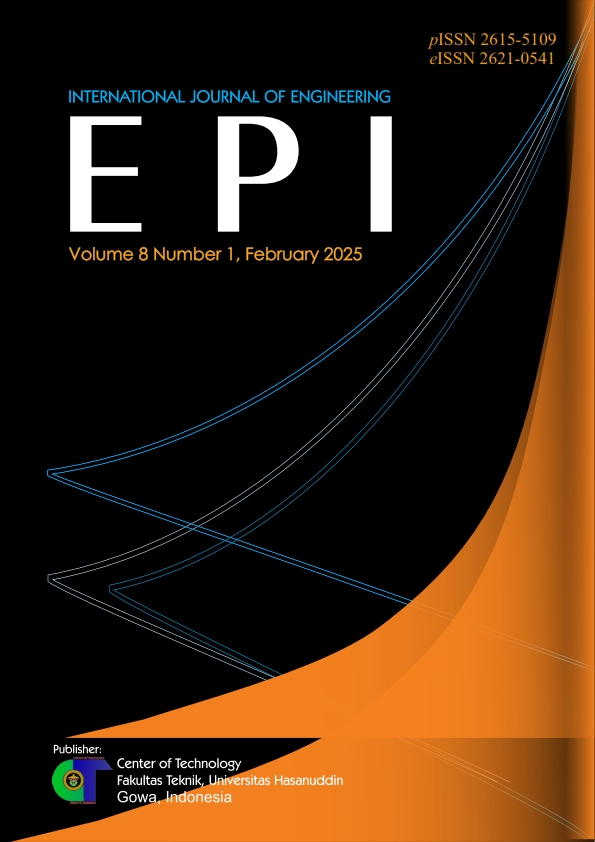Preliminary Design and Energy Production of a Mobile Floating Structure (MFS) for Offshore Wind Turbines in Indonesian Waters
Abstract
The Mobile Floating Structure (MFS) is an innovative floating wind turbine concept that utilizes a catamaran hull design to enhance mobility and operational efficiency. Unlike stationary platforms, the MFS can relocate to areas with higher wind energy density, making it a promising solution for optimizing wind energy harvesting in offshore environments. This study focuses on the preliminary design and energy production of the MFS. Maxsurf is used to analyze hydrostatics and assess the hydrodynamic performance of the MFS hull after the dimension of the MFS is determine with key considerations including rotor diameter and the weight of the wind turbine. Furthermore, four wind turbines are installed in the MFS. Those aspect were integrated into the design process to ensure realistic operational adaptability. As result. the resulting dimensions of the MFS were determined utilizing Maxsurf. Moreover, different with the previous study that use satellite data, the present study employs reanalysis data to estimate the energy density and power production of MFS. the energy density map is also produced in the present study to determine the monthly location of the MFS. The energy production of the MFS with four turbines has been calculated, and the energy production map is also drawn. Finally, the energy production of the MFS in the chosen location has also been estimated. The energy production map can be utilized to develop MFS in other location.

This work is licensed under a Creative Commons Attribution-ShareAlike 4.0 International License.











